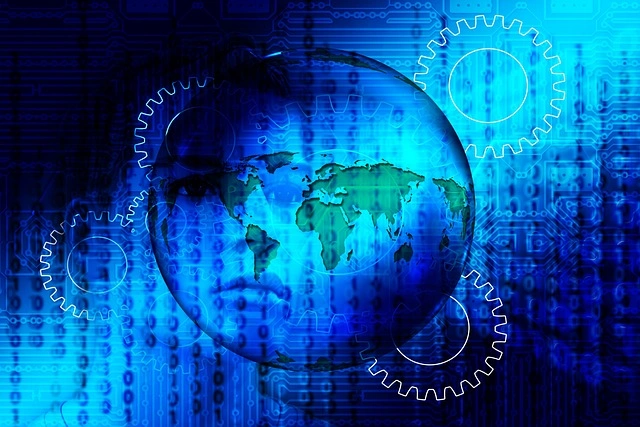THE SOFTWARE SECTOR IN 2025

THE SOFTWARE SECTOR IN 2025: A CONTINUED GROWTH JOURNEY
The software industry has been a cornerstone of technological advancement and economic growth for decades. From the rise of personal computers in the 1980s to the exponential growth of cloud computing, artificial intelligence (AI), and automation in the past decade, software has continuously shaped the world in profound ways. As we look toward the future, particularly into 2025, the software sector is poised to make even more significant strides. The rapid pace of innovation, the increasing reliance on technology in both personal and professional life, and the rise of emerging technologies will continue to fuel the progress of the software industry.
In this article, we will examine the key trends that will define the software sector in 2025, the challenges it may face, and the opportunities it will present. By understanding the trajectory of the software industry, businesses and tech professionals can prepare for a future that is increasingly dominated by software-driven solutions. The evolution of cloud computing, artificial intelligence, machine learning, cybersecurity, and low-code/no-code platforms will be central to this transformation.
The State of the Software Sector Today
To understand where the software industry is headed, it is important to first look at the present landscape. The software sector has grown at a rapid pace over the last few decades, driven by the proliferation of the internet, mobile technology, and enterprise software solutions. Today, we see software applications embedded in virtually every aspect of life, from social media platforms and productivity tools to advanced technologies like autonomous vehicles and Internet of Things (IoT) devices.
There are several key sectors within the software industry that have driven this growth, including:
- Enterprise Software: Large organizations continue to rely on enterprise software solutions to streamline operations, manage data, and improve customer experiences. This includes solutions like Enterprise Resource Planning (ERP), Customer Relationship Management (CRM), and Supply Chain Management (SCM) software.
- Cloud Computing: The cloud has transformed the way businesses manage their IT infrastructure, offering scalable, on-demand computing resources without the need for on-premise hardware. Major players in cloud computing, such as Amazon Web Services (AWS), Microsoft Azure, and Google Cloud, are at the forefront of this shift.
- Consumer Software: From mobile apps to web-based tools, software designed for consumers is an integral part of daily life. Social media, gaming, e-commerce, and communication apps are prime examples of consumer-focused software that continues to evolve.
- AI and Machine Learning: Artificial intelligence (AI) and machine learning (ML) have emerged as game-changers in the software sector. These technologies are being used in everything from personalized recommendations on e-commerce platforms to self-learning algorithms that can optimize business processes.
- Cybersecurity: With the growing number of cyber threats, cybersecurity software has become a critical part of the digital ecosystem. Businesses and individuals alike are investing in software solutions that protect sensitive data and ensure safe online transactions.
By 2025, these sectors will continue to expand, with new technologies and innovations driving further growth. As the world becomes more digitally interconnected, the need for software to support these advancements will be greater than ever.

Key Trends Shaping the Software Sector in 2025
Several major trends are expected to define the software sector in 2025. These trends are shaped by technological advancements, changing business needs, and shifts in consumer behavior. Below are some of the most prominent trends to watch:
1. Artificial Intelligence and Machine Learning: The Future of Automation
Artificial intelligence (AI) and machine learning (ML) are already major driving forces in the software sector, and their influence will continue to grow in the coming years. By 2025, AI and ML will be embedded in nearly every aspect of software development, providing businesses with the ability to automate tasks, optimize decision-making, and deliver more personalized experiences to users.
- AI-Driven Software Development: One of the key impacts of AI in the software industry will be on software development itself. AI-powered tools will help developers write code faster, debug applications more efficiently, and predict future software trends. Tools like GitHub Copilot are already using AI to assist developers, and by 2025, such tools will be even more advanced, making the development process quicker and more efficient.
- Smarter Business Processes: Businesses are increasingly using AI and ML to analyze vast amounts of data, identify trends, and predict future outcomes. AI-powered software solutions will be deployed across industries, from healthcare to finance, to help automate routine tasks, improve customer service, and enhance decision-making.
- Personalized User Experiences: AI will be central to creating personalized user experiences. By analyzing user behavior, AI algorithms will be able to deliver tailored content, product recommendations, and services. This will transform industries such as e-commerce, entertainment, and education, where personalized recommendations are already becoming the norm.
2. Cloud Computing: The Future of Scalable Software Solutions
Cloud computing has already revolutionized the way businesses approach IT infrastructure. In 2025, the cloud will continue to be a cornerstone of the software sector, with even more organizations moving their operations to the cloud for greater scalability, flexibility, and cost-efficiency.
- Cloud-Native Applications: By 2025, cloud-native applications will become the standard for software development. These applications are designed to run in cloud environments, allowing businesses to take advantage of scalability, security, and ease of maintenance. The shift to cloud-native software will enable organizations to deploy applications more quickly and efficiently, reducing the time-to-market for new products and services.
- Multi-Cloud and Hybrid Cloud Solutions: As businesses embrace cloud computing, many will adopt multi-cloud and hybrid cloud strategies to avoid vendor lock-in and ensure greater flexibility. This means that software providers will need to offer solutions that work seamlessly across different cloud environments, allowing businesses to choose the best cloud provider for their needs.
- Serverless Computing: Serverless computing, a model in which developers write code without managing the underlying infrastructure, is expected to grow in popularity by 2025. This model simplifies development by eliminating the need to manage servers, reducing operational costs, and improving scalability. Serverless architectures will become more mainstream, especially for startups and small businesses.
3. Low-Code/No-Code Platforms: Empowering the Non-Developer
Low-code and no-code development platforms are expected to be a major growth area in the software sector by 2025. These platforms allow individuals with little or no coding experience to build applications, automate workflows, and create software solutions. The rise of these platforms is democratizing software development, enabling non-developers to create their own tools and applications without relying on a dedicated IT team.
- Business Process Automation: With low-code/no-code platforms, businesses can automate a variety of processes, from data entry and document management to customer service workflows. These platforms empower employees to create custom solutions tailored to their specific needs, improving efficiency and productivity.
- Citizen Development: By 2025, the rise of “citizen developers” (non-technical employees who create software using low-code/no-code platforms) will significantly change the landscape of software development. Businesses will be able to reduce their reliance on IT departments for every software request, enabling employees from different departments to create tools that support their work.
- Speed of Innovation: Low-code and no-code platforms enable businesses to develop software applications at a faster pace. This allows for rapid prototyping, testing, and iteration, which is critical in today’s fast-moving business environment. The speed of innovation will increase significantly, as organizations will be able to create and deploy solutions faster than ever before.
4. Cybersecurity: Safeguarding the Digital Ecosystem
As digital transformation accelerates, cybersecurity will continue to be a top priority for businesses. In 2025, the software sector will see the rise of more sophisticated cybersecurity solutions to counteract increasingly complex cyber threats.
- AI-Powered Cybersecurity: AI will play a central role in cybersecurity by helping to detect and mitigate threats in real-time. AI algorithms will be able to analyze network traffic, identify anomalies, and predict potential threats, providing businesses with the ability to respond faster to cyberattacks.
- Zero-Trust Security Models: The zero-trust security model, which assumes that threats can exist both inside and outside the network, will become more prevalent by 2025. This approach will require businesses to implement strict identity and access controls, encryption, and continuous monitoring to ensure the security of their digital environments.
- Quantum-Resistant Encryption: As quantum computing advances, traditional encryption methods may become vulnerable to attacks. By 2025, the software sector will likely see the adoption of quantum-resistant encryption techniques to protect sensitive data from the potential risks posed by quantum computing.
5. Edge Computing: Bringing Computing Closer to the User
Edge computing, the practice of processing data closer to the source (at the “edge” of the network), will become more prevalent by 2025. This will be especially important for applications that require low latency, such as autonomous vehicles, industrial IoT, and augmented reality (AR) applications.
- Real-Time Data Processing: With edge computing, businesses will be able to process and analyze data in real-time, leading to faster decision-making and more efficient operations. Software solutions will be designed to run on edge devices, allowing for faster responses to changing conditions.
- IoT and Smart Devices: The proliferation of IoT devices will drive the demand for edge computing, as these devices will generate vast amounts of data that need to be processed quickly. Software solutions for managing IoT devices, data collection, and analytics will be critical in enabling businesses to leverage the full potential of their IoT infrastructure.

Challenges Facing the Software Sector in 2025
While the software sector is poised for significant growth in 2025, it will not be without its challenges. Some of the key obstacles the industry may face include:
- Talent Shortages: The demand for skilled software developers, AI specialists, and cybersecurity experts is expected to continue outpacing supply. Companies will need to invest in training and upskilling their employees to meet the growing demand for talent.
- Data Privacy Regulations: As data privacy concerns continue to rise, governments around the world will likely implement stricter regulations. Software companies will need to navigate these regulatory environments while ensuring compliance and protecting user data.
- Integration Complexity: As businesses adopt more advanced software solutions, they will face challenges integrating new technologies with legacy systems. Software providers will need to offer seamless integration solutions to ensure smooth transitions.
Conclusion
By 2025, the software sector will continue to be a driving force in the global economy, fueled by advancements in AI, machine learning, cloud computing, cybersecurity, and low-code/no-code platforms. As businesses become more reliant on digital solutions to streamline operations, enhance customer experiences, and drive innovation, the demand for sophisticated software will only increase.
While the software industry faces challenges, such as talent shortages and regulatory hurdles, these obstacles will be addressed through technological innovation and strategic planning. As the sector evolves, businesses that stay ahead of the trends, embrace new technologies, and adapt to the changing needs of the market will continue to thrive in the competitive software landscape of 2025.









